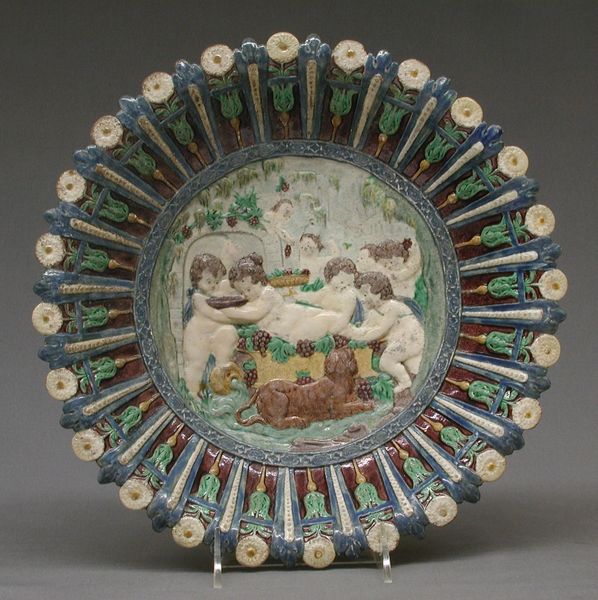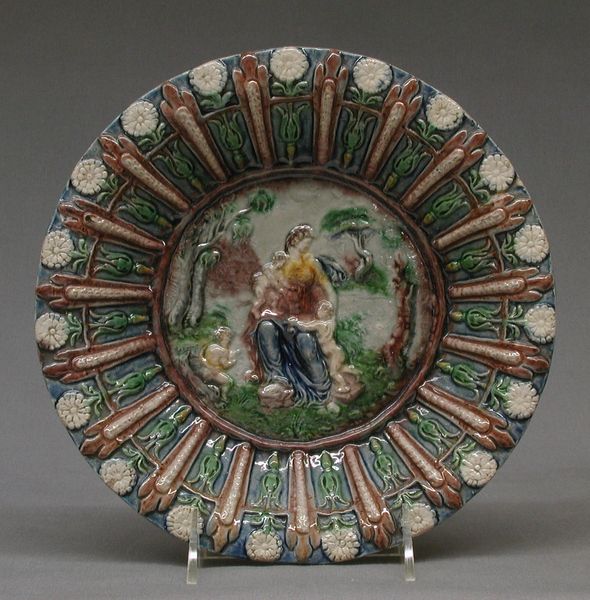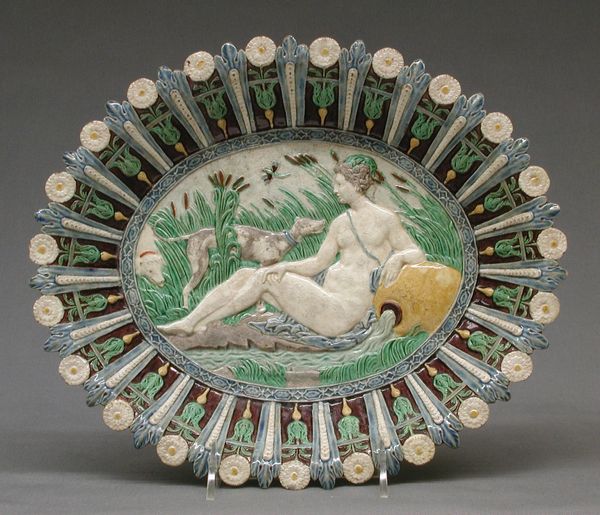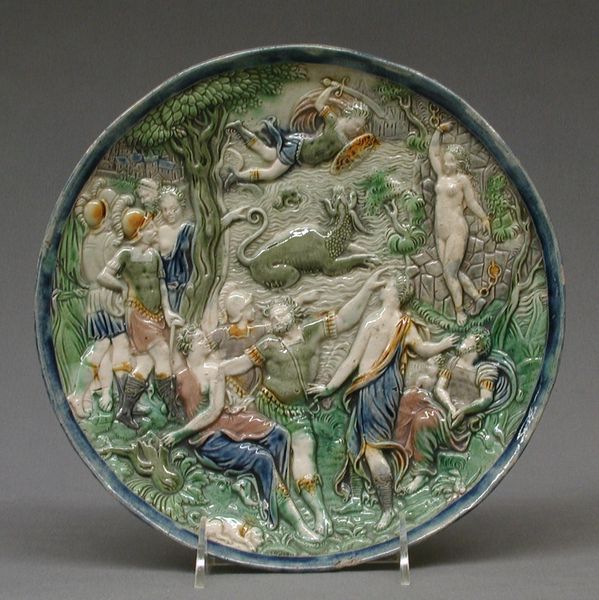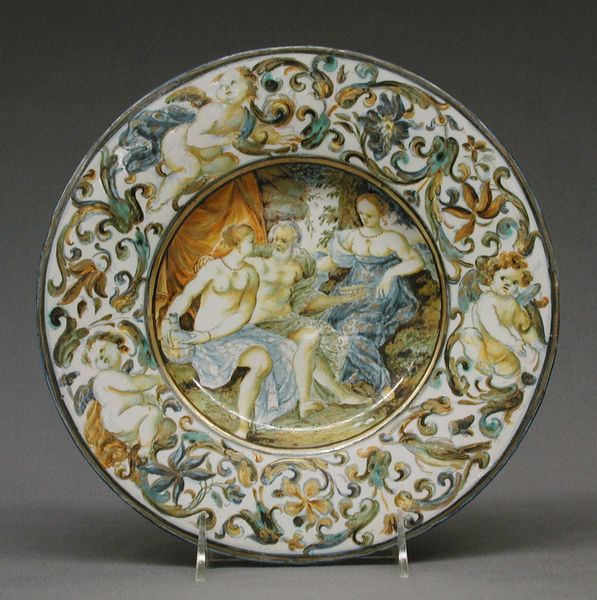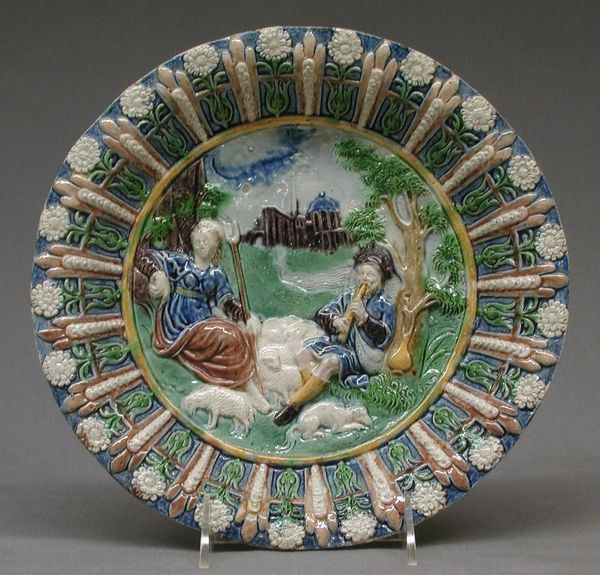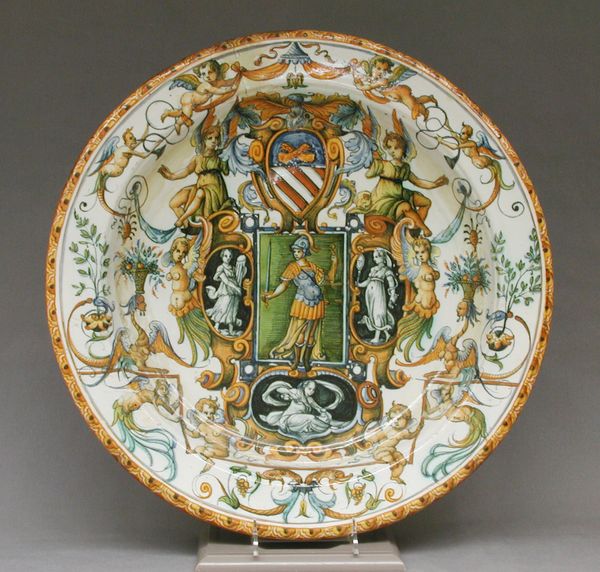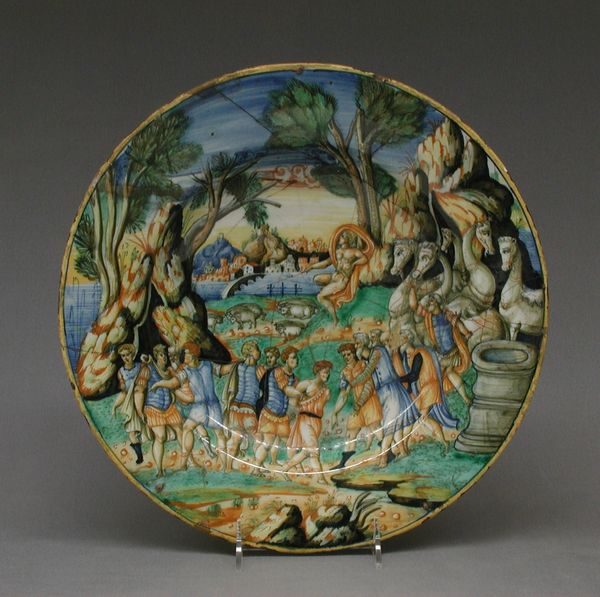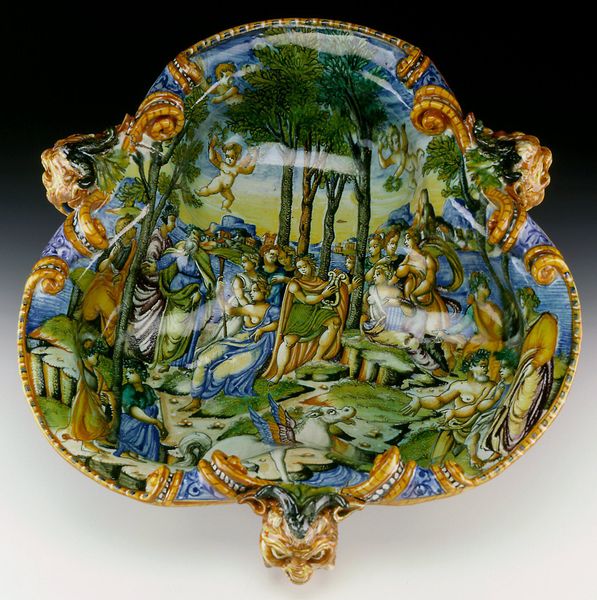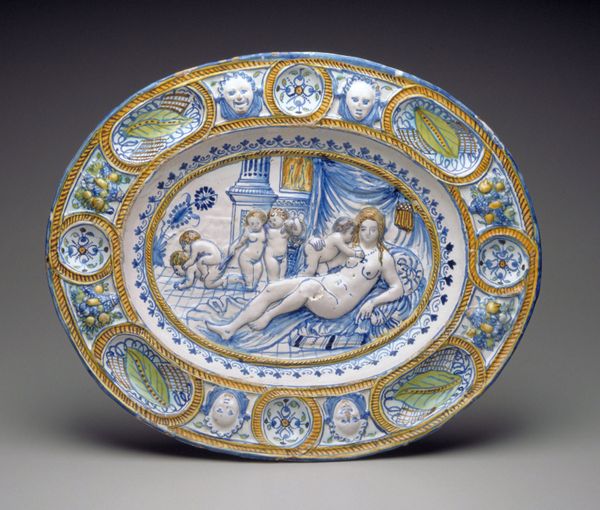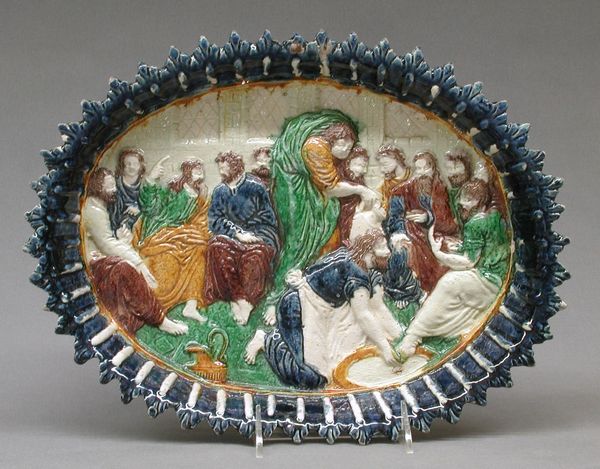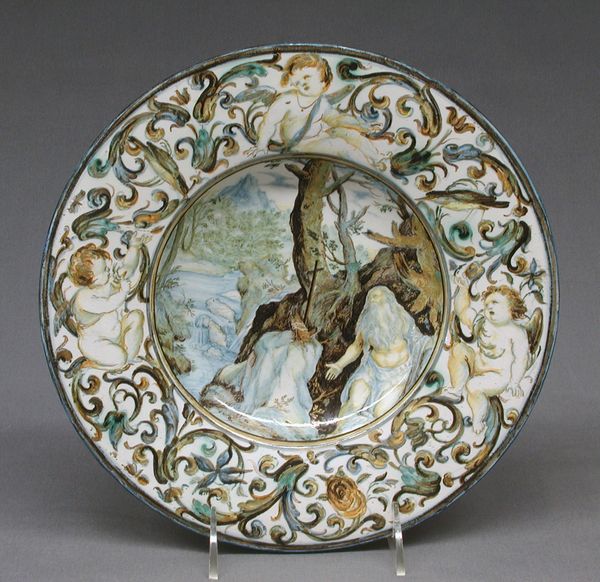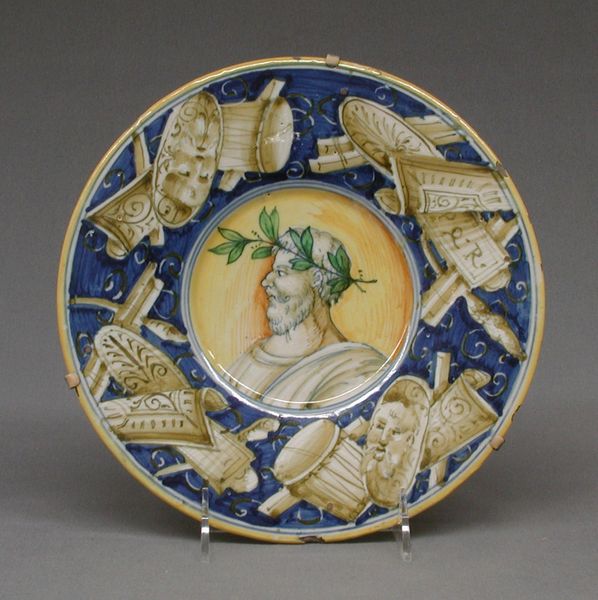
Dish with Acteon changed into a stag by Diana 17th century
0:00
0:00
relief, ceramic, sculpture
#
fairy-painting
#
narrative-art
#
baroque
#
relief
#
ceramic
#
figuration
#
sculpture
#
ceramic
Dimensions: Overall (confirmed): 2 7/8 × 11 11/16 × 11 11/16 in. (7.3 × 29.7 × 29.7 cm)
Copyright: Public Domain
Curator: Looking at this stunning dish titled “Acteon changed into a stag by Diana,” a 17th-century ceramic relief, presently housed at the Metropolitan Museum of Art, what are your first thoughts? Editor: Its ornamental style makes a big first impression. The symmetry of the figures contrasts beautifully with the vibrant but muted glazes on the plate’s radiating elements. It evokes a feeling of controlled drama. Curator: Indeed. Palissy ware like this, although ornamental, often conveyed profound messages. This piece represents a crucial moment from Ovid's "Metamorphoses," portraying Acteon's transgression and subsequent punishment. It's a classic example of the patron class drawing upon these myths to illustrate political ideologies. Editor: Absolutely. The story has resonance far beyond classical narratives. Formally speaking, I’m struck by how the artist utilized the limitations of ceramic to create depth and movement. Acteon’s dynamic pose compared with the fixed expressions of Diana and her attendants creates tension. The color palette, dominated by blues and greens, seems deliberately chosen to evoke a sense of envy and tragedy. Curator: And consider the Baroque period's penchant for the theatrical and morally didactic. The dish does not simply recount a mythological story. It performs one. By extension, we also must remember Palissy himself; his social standing as Huguenot, his role as artisan-scientist, the ways the social milieu produced conditions favorable to a reading and production of moralizing exempla from the Classics. Editor: I can see your point, but focusing on just historical elements almost obscures the piece’s aesthetic sophistication. Curator: I would contend such an aesthetic is historically produced and delimited. Still, what stays with me is how effectively it weaves the viewer into the narrative, not just by visual story telling, but by invoking these universal moral struggles. Editor: Agreed. What a wonderfully disturbing marriage of form and cautionary tale, that continues to intrigue viewers today.
Comments
No comments
Be the first to comment and join the conversation on the ultimate creative platform.
